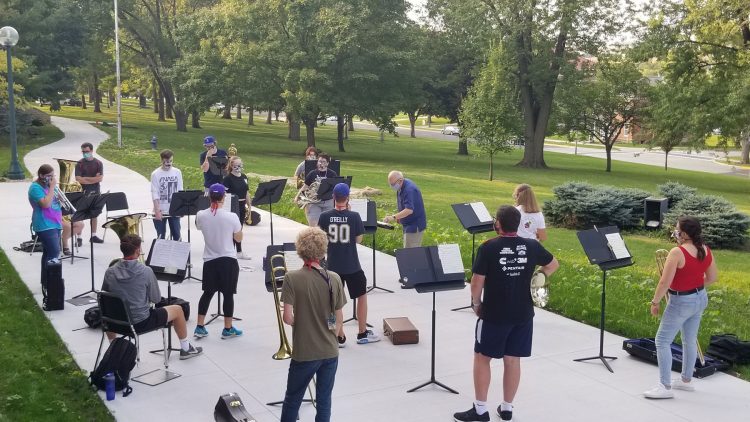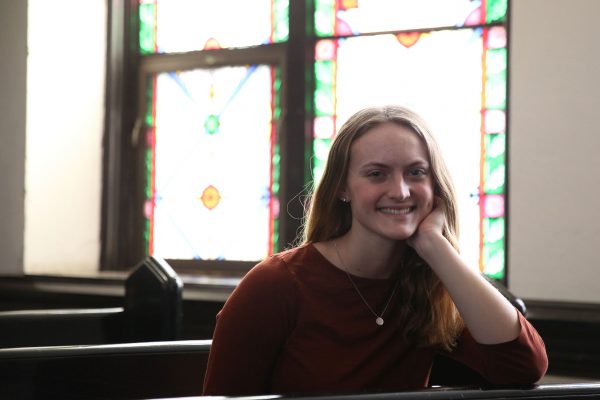Cornell College junior Kenna Ebert never knew she could be so grateful to make music with her peers.

She’s in a saxophone quartet that, like most of the 11 other Cornell music ensembles this year, was rehearsing twice a week. They wore specialized masks and stayed 10 feet apart. After playing indoors, the space is vacated for 30 minutes prior to another rehearsal, lesson, or private practice session.
“I never thought I would take making live music for granted,” she says. “It is such a big part of music that I had never thought about not being able to do it. I'm glad Cornell is working hard to make live music possible.”
While some colleges aren’t holding in-person rehearsals, Cornell’s Department of Music held them during Blocks 1 and 2, through October, before a cautionary pause was taken to keep COVID-19 numbers in check. Based on a national study of aerosols produced by music making, the department formed its ensembles with a maximum of 16 musicians, each of which rehearsed for no more than 30 minutes at a time. Most rehearsed twice a week, for a total of only an hour—much less than in a normal year.

“I believe it is encouraging both faculty and students to take the rehearsal times very seriously. Students are setting up on time and coming prepared to play. Although rehearsal times are shorter, I have not noticed a loss in productivity,” Ebert says.
Musicians are making up their lost rehearsal time with SmartMusic, a software used by directors to assign students new pieces to learn on their own.
Music Department chair and Professor of Music Joe Dieker also has enjoyed rehearsals, even if they are shorter.

“These students are serious about it. They show up. They do everything I ask. Very few are missing and if they do, they have a reason,” he says. “We don’t have as much time. We are playing good music and I think they like it.”
Among the works Dieker is directing is a Giovanni Gabrieli piece for two antiphonal brass choirs. It’s being rehearsed on the two sides of King Chapel’s balcony to recreate the composer’s original setting in Venice’s St. Mark’s Basilica.
Based on the national research, the Music Department provided specialized masks for all musicians in addition to bell covers for brass players. Over the summer Dieker’s wife, local piano teacher Mary Dieker, and Nancy Rawson ’75 sewed over 50 masks with slits for wind players. The college also provided singing masks (with extra space in front of the face) for vocal students and choir members.
About 110 students are participating in the 12 groups—three choirs, a chamber orchestra, jazz ensemble, percussion ensemble, two steel drum bands, and chamber groups for brass, flute, saxophone, and clarinet-bassoon.
Each player is recording their part, to be combined with their peers for a concert video that will be shared later this fall.
Despite the limitations from the pandemic, Ebert says she has learned a lot from her quartet experience this fall.
“This format of playing requires each person to know their part well and listen to others. We also do not rely on a conductor in our quartet, so we are learning to improve our sense of time and rhythm,” she says. “I feel that this small ensemble experience has made me a better musician.”